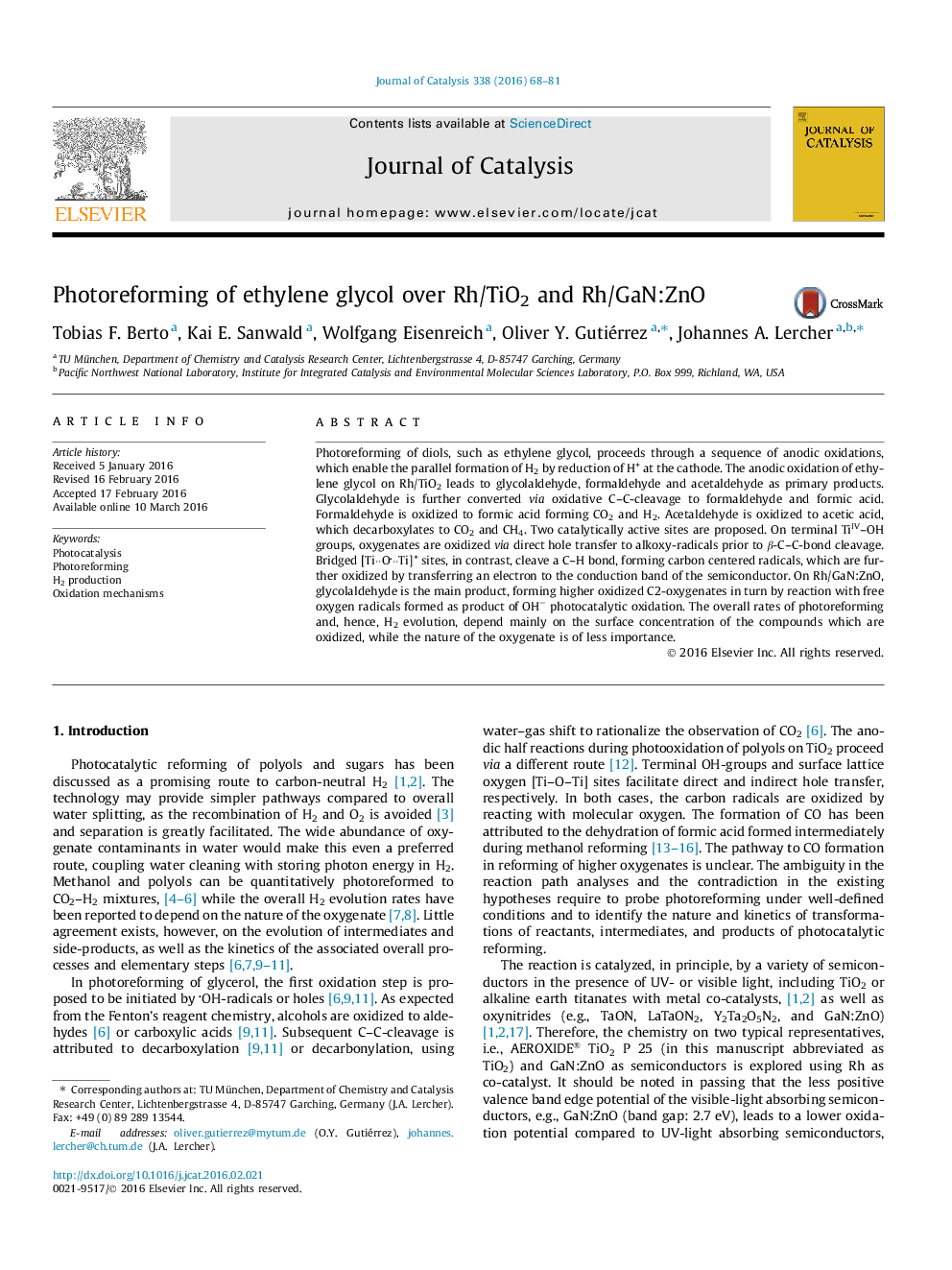| Article ID | Journal | Published Year | Pages | File Type |
|---|---|---|---|---|
| 60619 | Journal of Catalysis | 2016 | 14 Pages |
•H2 production via photoreforming of ethylene glycol (EG) on Rh/TiO2 and Rh/GaN:ZnO.•EG mainly oxidizes to glycolaldehyde, further C–C-cleavage leads to CH2O and HCOOH.•HCOOH dehydrogenates to CO2 or dehydrates to CO during C1-/C2-photoreforming.•H2-evolution rates of C2-oxygenates are independent of the nature of chemical bond.•Conversions via alkoxy- or C-centered radicals upon C–C-cleavage or H abstraction.
Photoreforming of diols, such as ethylene glycol, proceeds through a sequence of anodic oxidations, which enable the parallel formation of H2 by reduction of H+ at the cathode. The anodic oxidation of ethylene glycol on Rh/TiO2 leads to glycolaldehyde, formaldehyde and acetaldehyde as primary products. Glycolaldehyde is further converted via oxidative C–C-cleavage to formaldehyde and formic acid. Formaldehyde is oxidized to formic acid forming CO2 and H2. Acetaldehyde is oxidized to acetic acid, which decarboxylates to CO2 and CH4. Two catalytically active sites are proposed. On terminal TiIV–OH groups, oxygenates are oxidized via direct hole transfer to alkoxy-radicals prior to β-C–C-bond cleavage. Bridged [Ti··O··Ti]+ sites, in contrast, cleave a C–H bond, forming carbon centered radicals, which are further oxidized by transferring an electron to the conduction band of the semiconductor. On Rh/GaN:ZnO, glycolaldehyde is the main product, forming higher oxidized C2-oxygenates in turn by reaction with free oxygen radicals formed as product of OH− photocatalytic oxidation. The overall rates of photoreforming and, hence, H2 evolution, depend mainly on the surface concentration of the compounds which are oxidized, while the nature of the oxygenate is of less importance.
Graphical abstractFigure optionsDownload full-size imageDownload high-quality image (106 K)Download as PowerPoint slide
